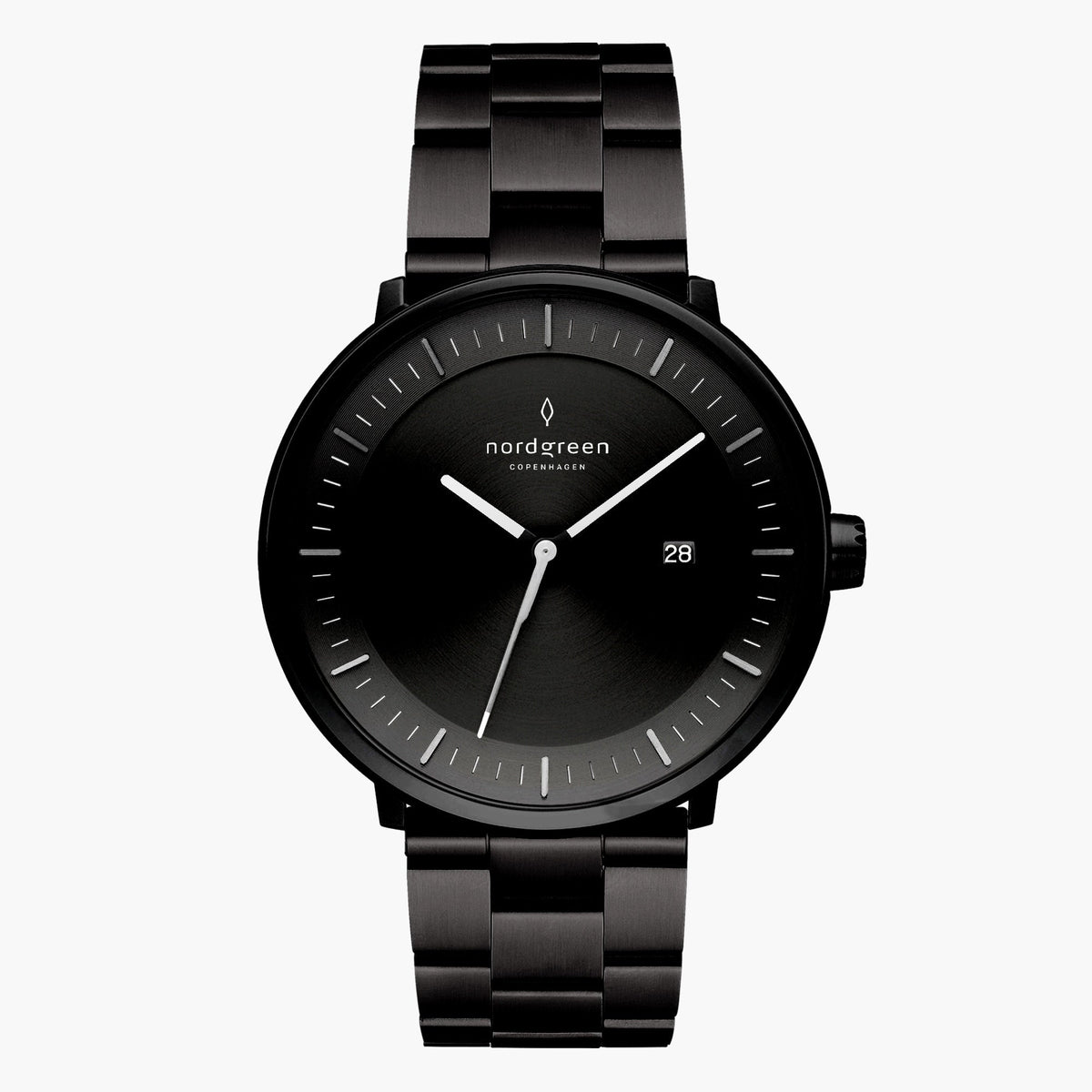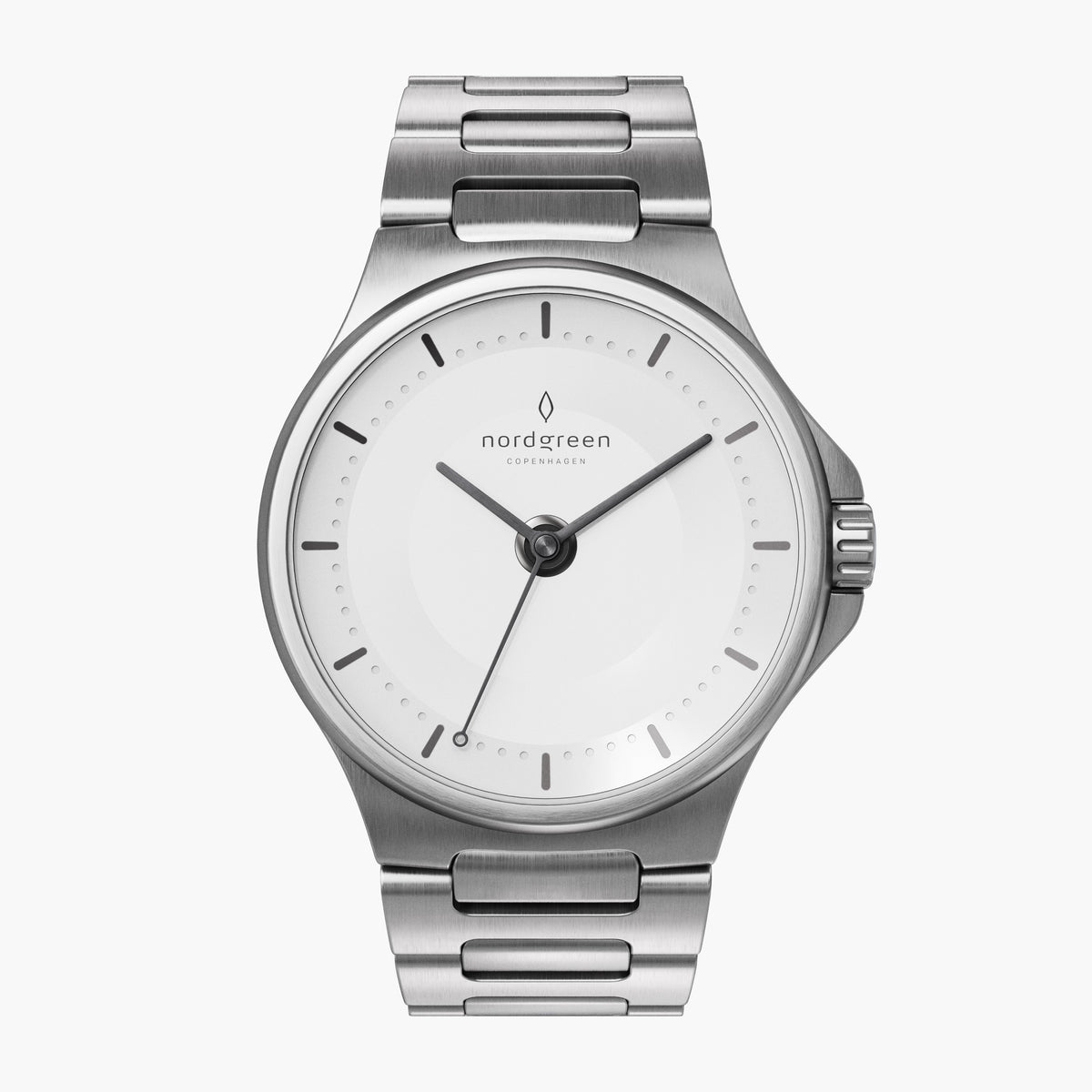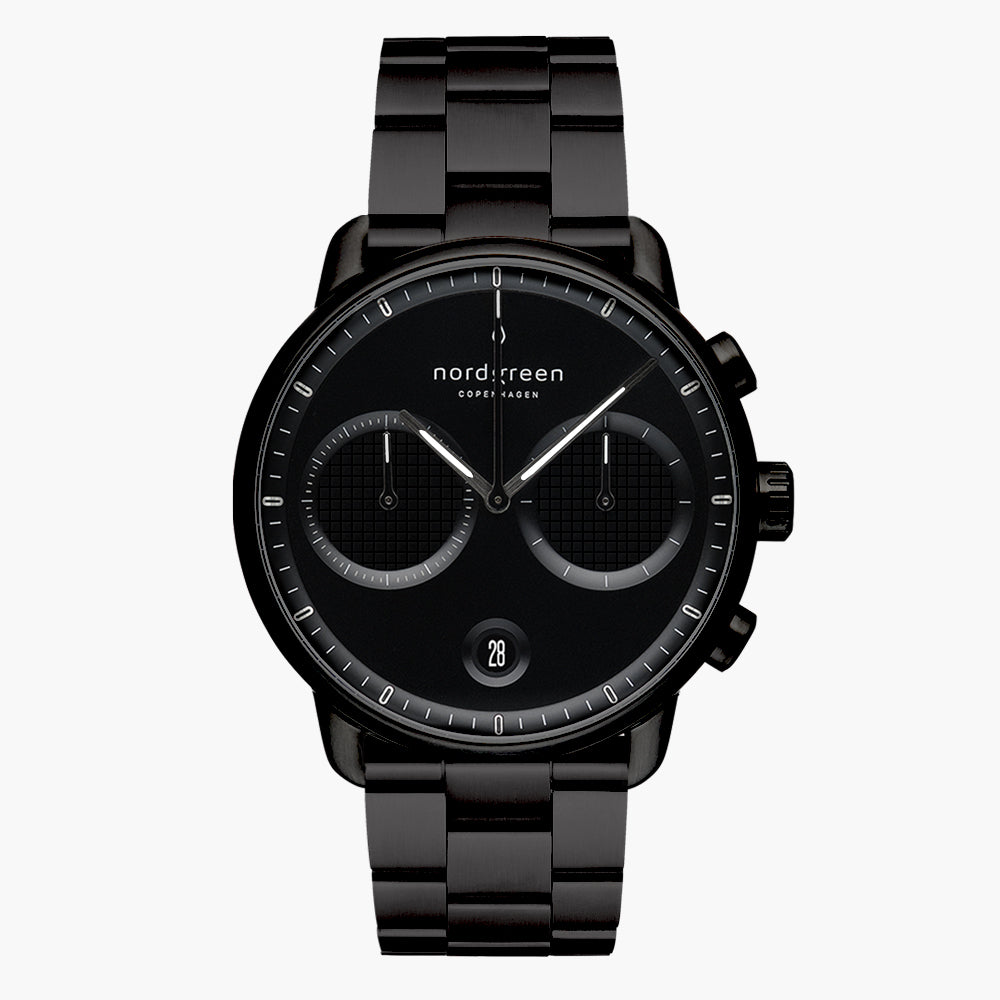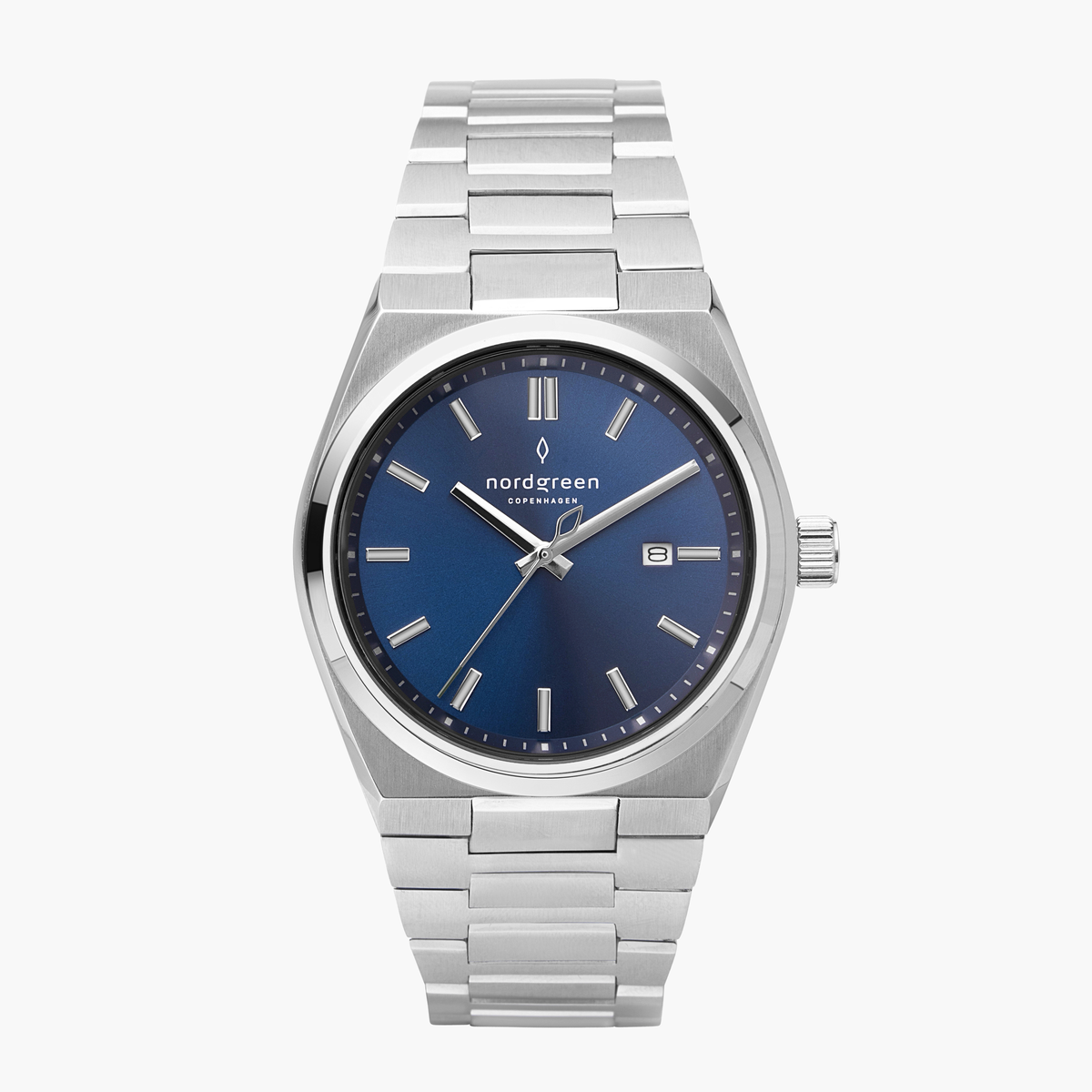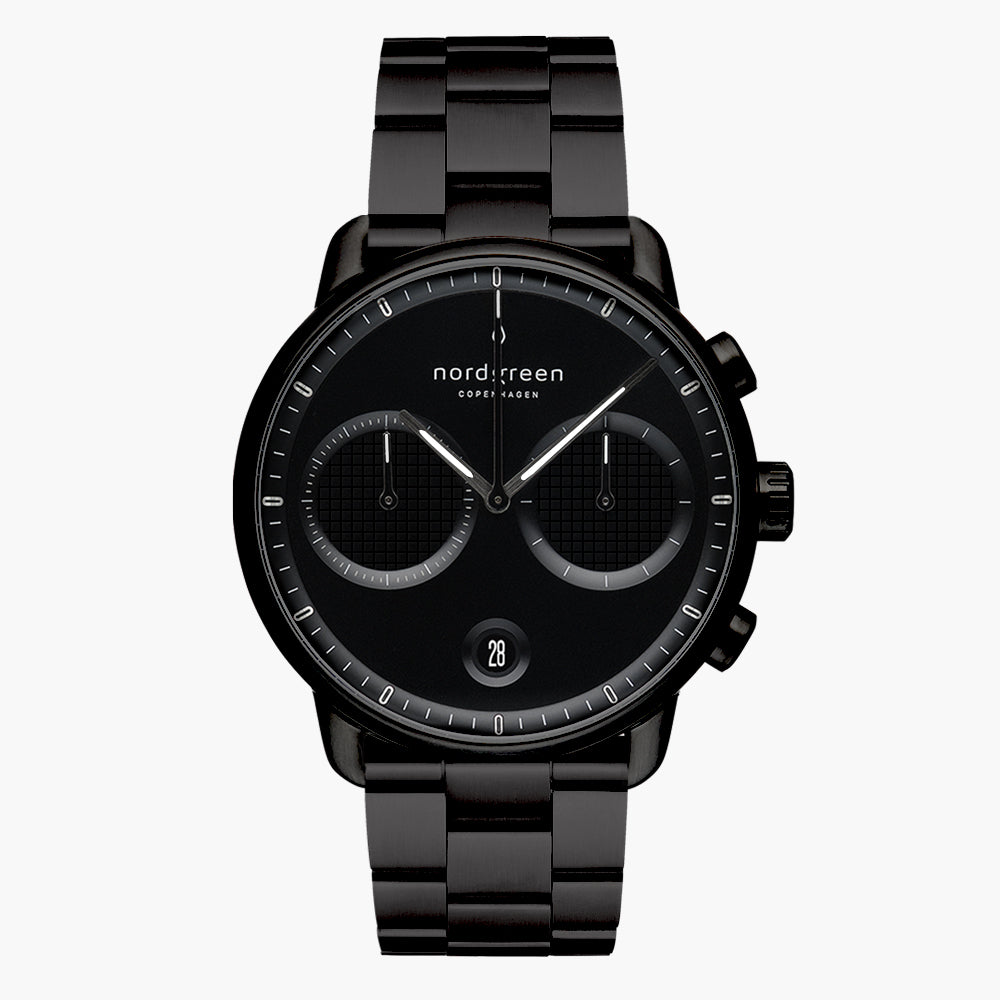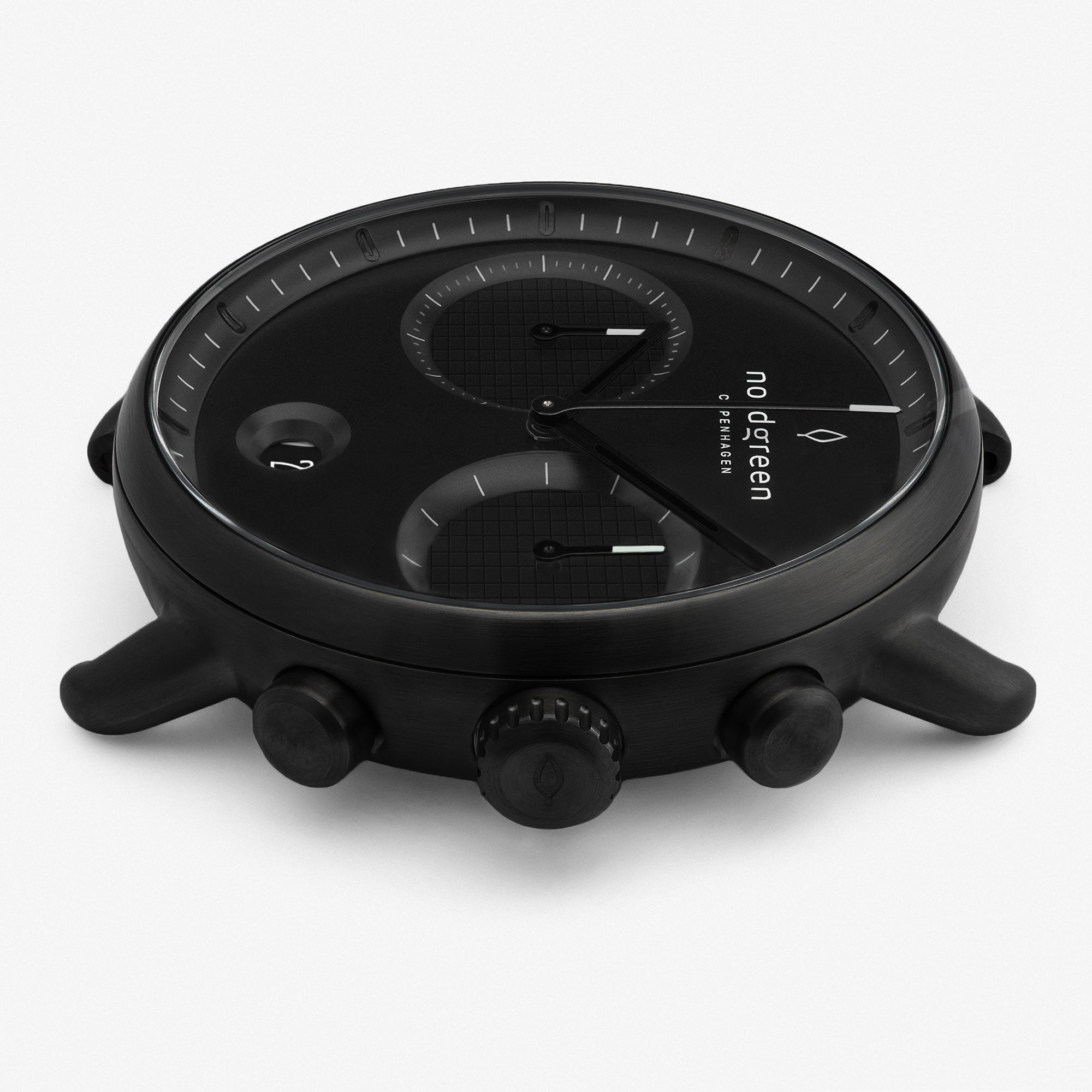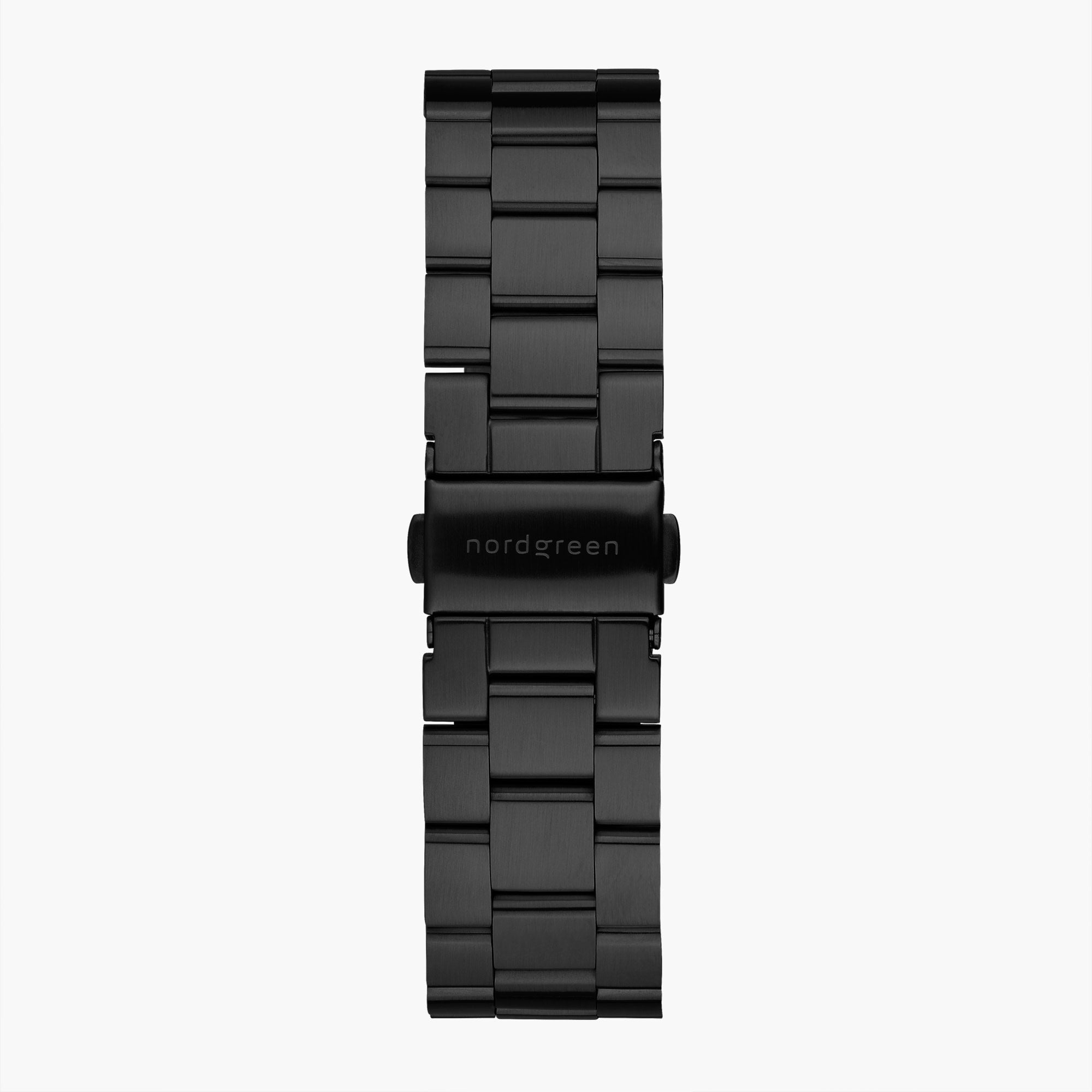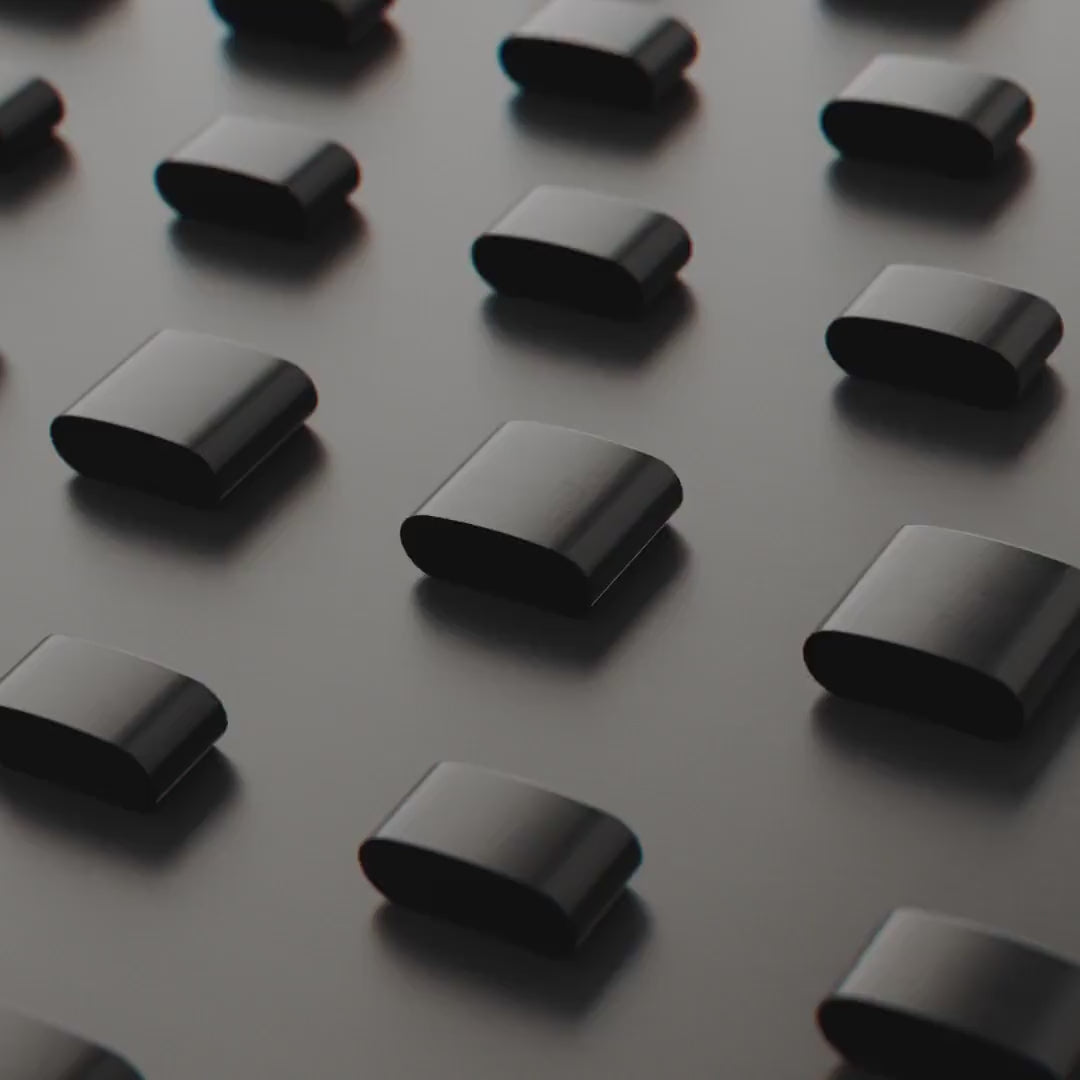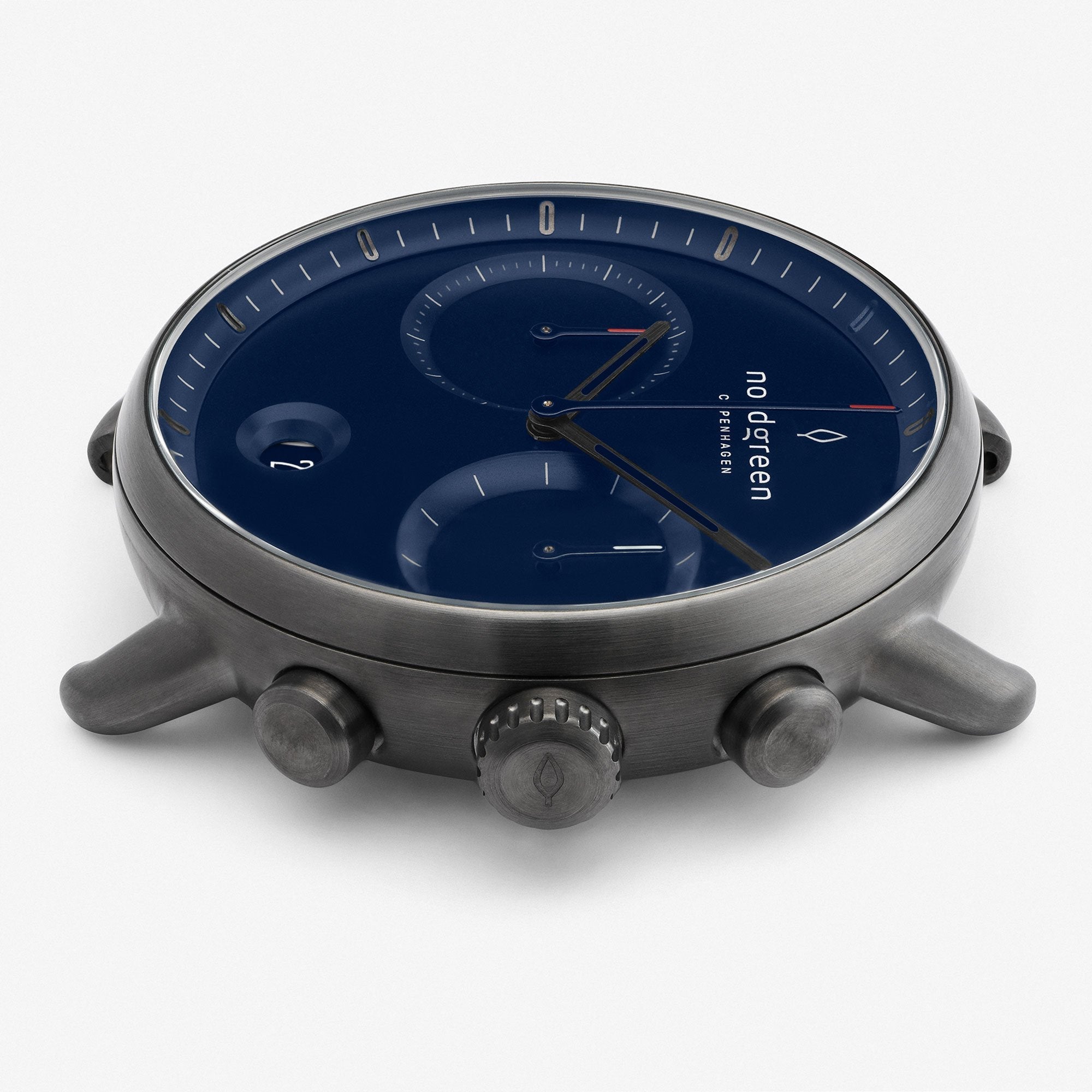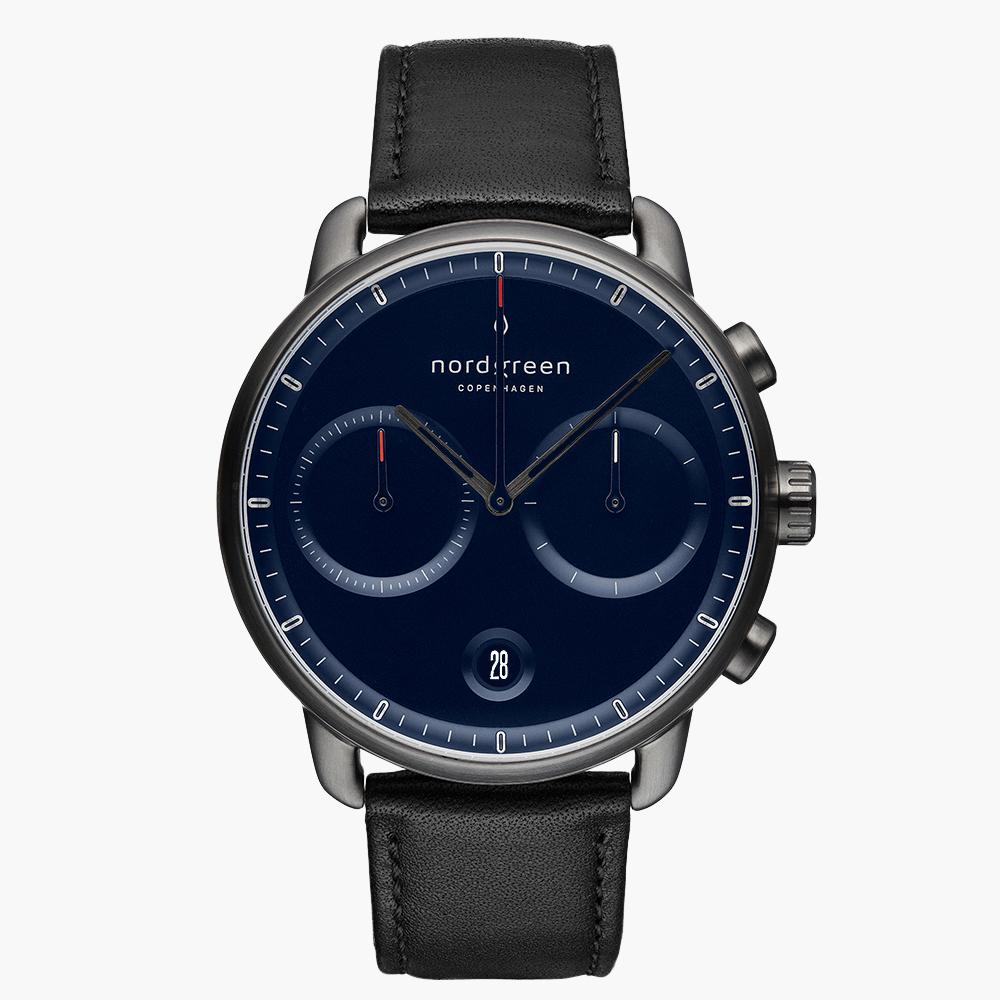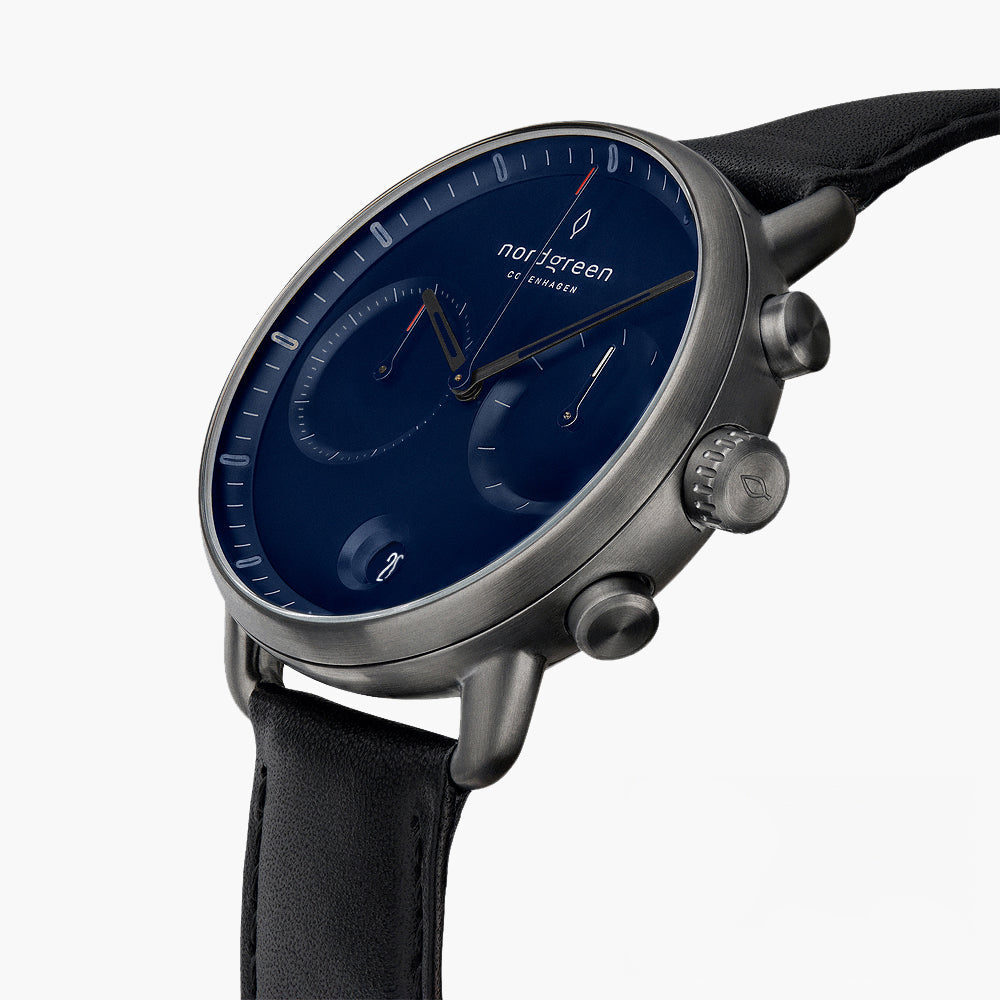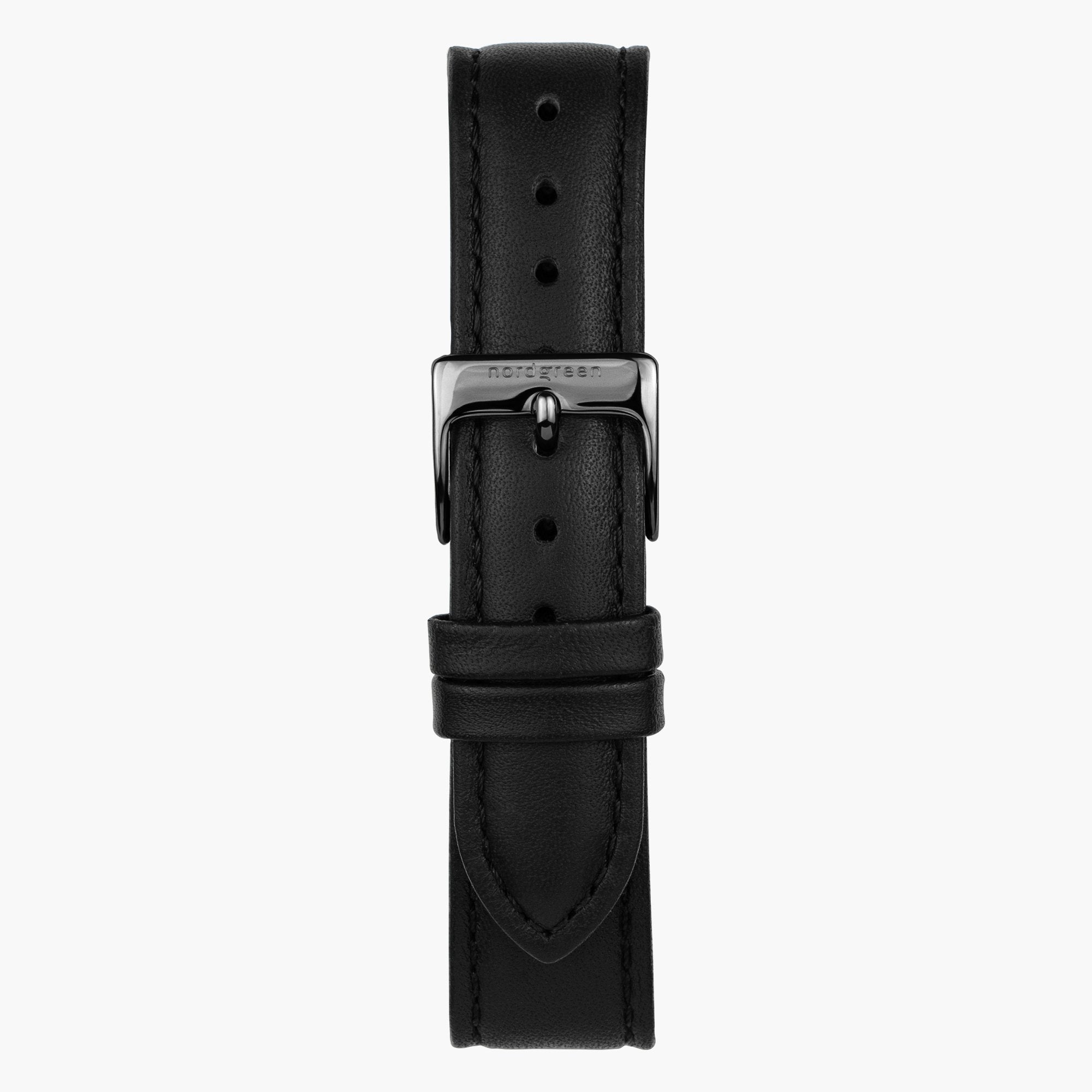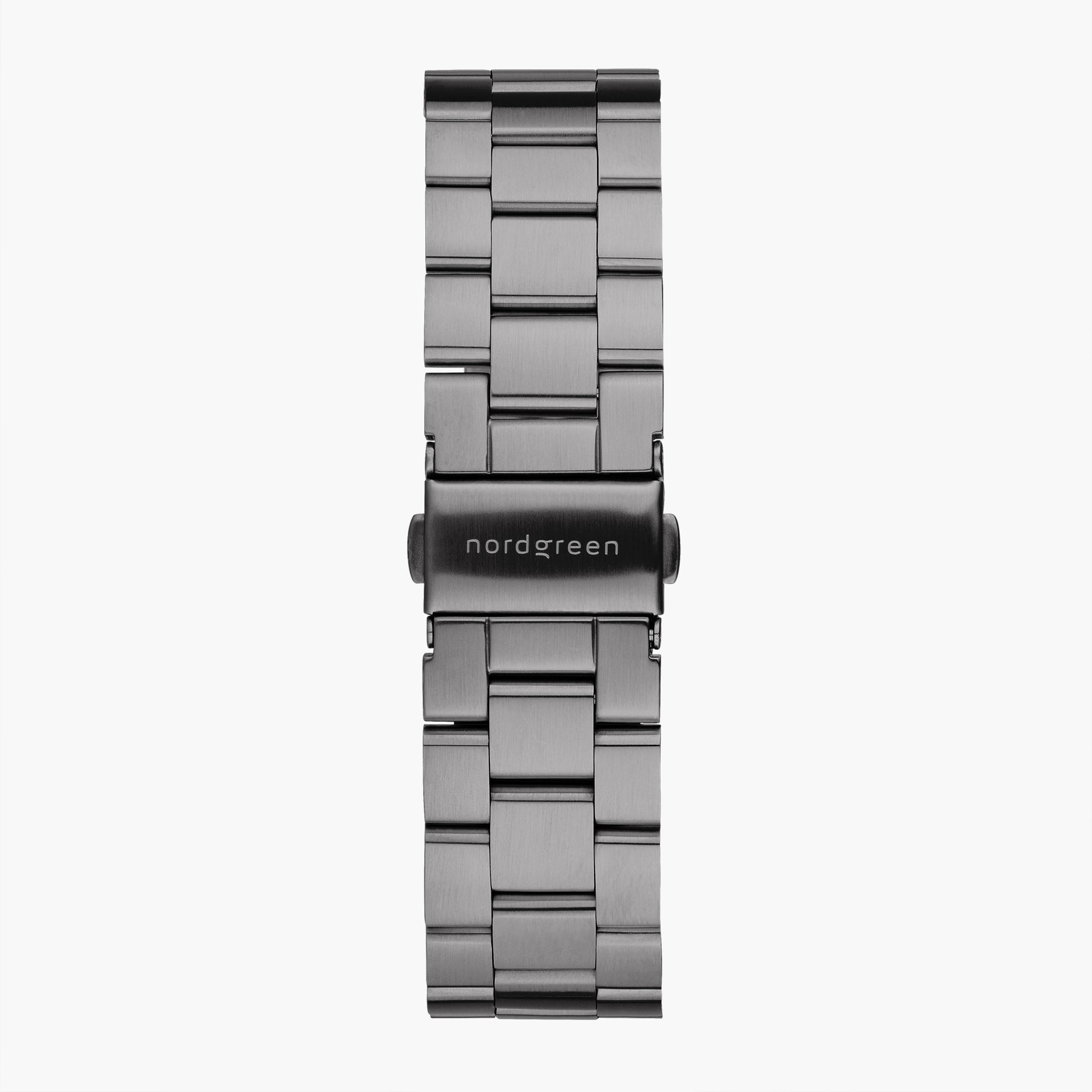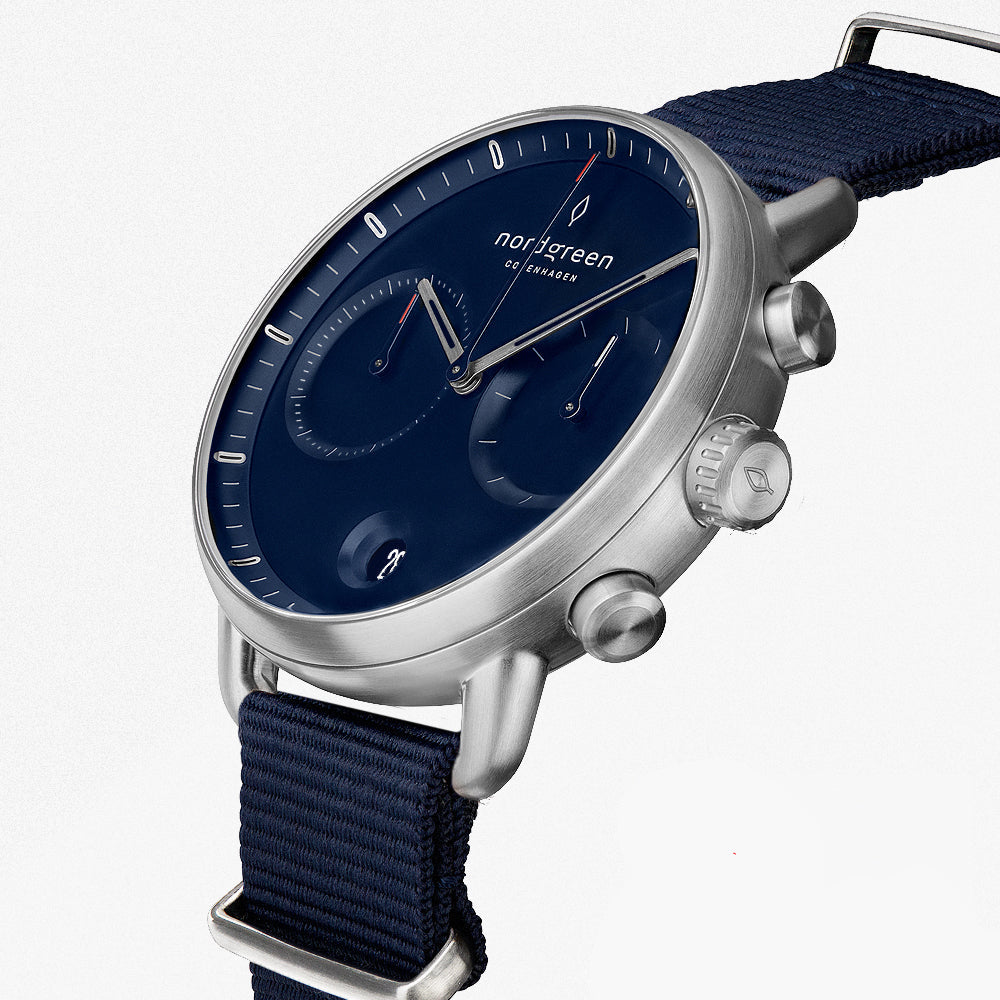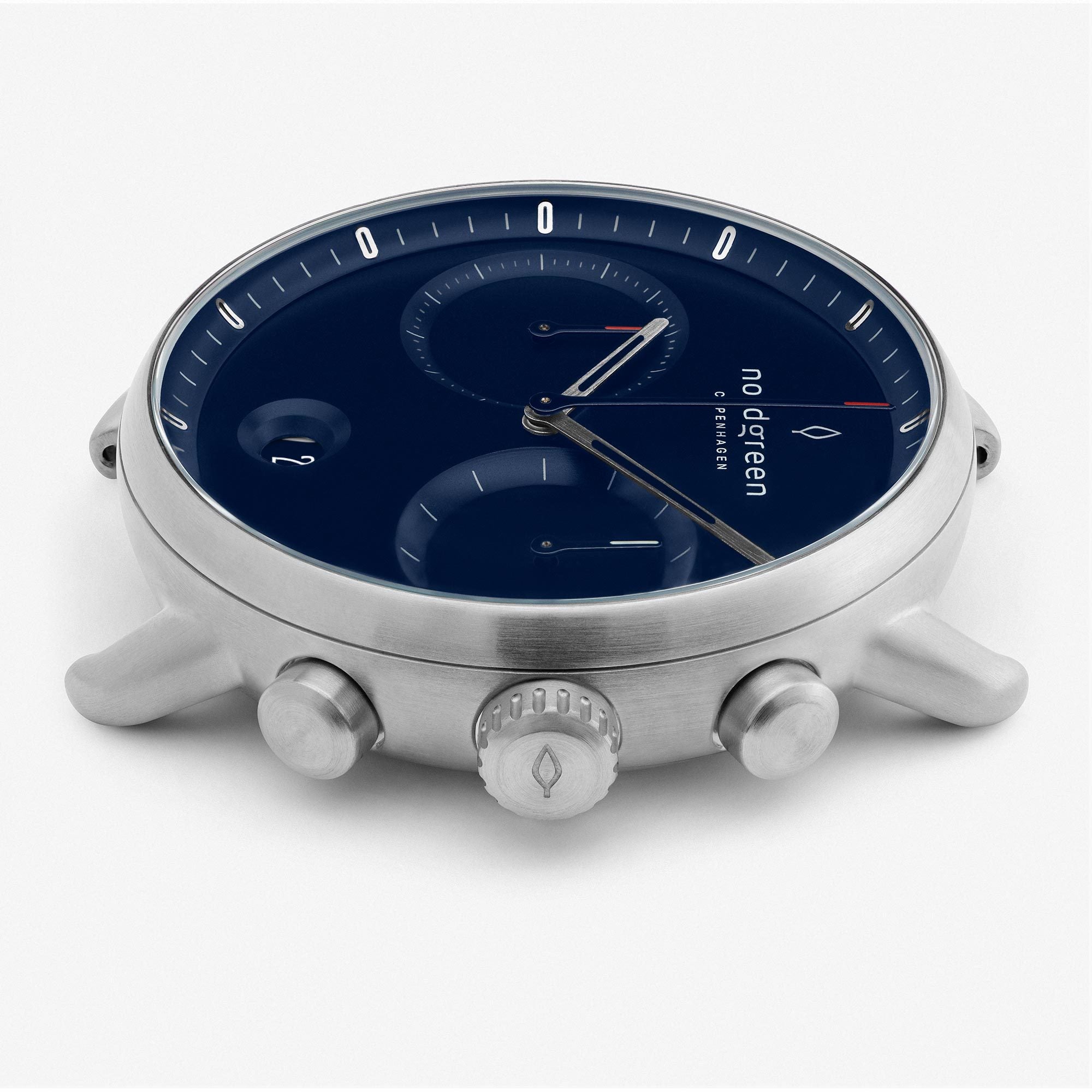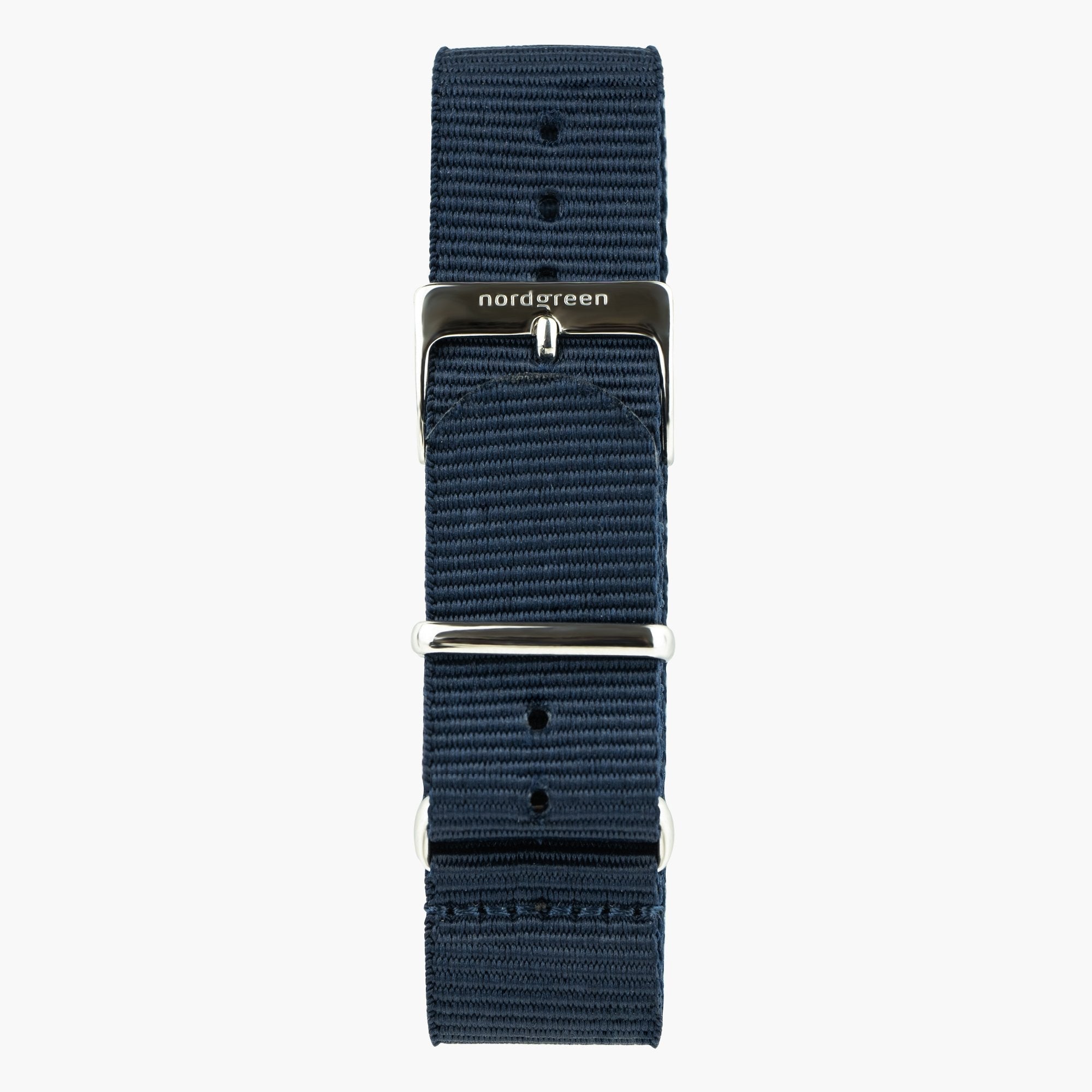Check your watch before cleaning
Before you begin, take a moment to identify the materials your watch is made of. All Nordgreen watches feature durable 316L stainless steel cases — finished in silver, gold, rose gold, or gunmetal grey — but your strap material determines how to clean it.
For example:
Leather straps require a gentle approach and should never be soaked.
Stainless steel or mesh straps can handle light moisture.
Rubber and nylon straps are more resilient and can be washed with water.
Also, always check your watch’s water resistance. If it isn’t water resistant, keep it away from direct water contact and use a soft, damp cloth instead.
Nordgreen watches are designed for easy maintenance thanks to interchangeable straps that can be swapped in seconds without any tools. This makes cleaning simple and safe — you can remove the strap and clean each part separately.
Whether you’re wearing a Pioneer with a stainless steel link bracelet or a Native with a soft Italian leather strap, each material deserves the right kind of care:
Leather: Wipe gently with a slightly damp cloth and dry immediately. Avoid submerging in water.
Stainless steel: Use warm soapy water and a soft toothbrush to clean between links, then dry with a microfiber cloth.
Rubber or nylon: Wash with mild soap and water, rinse, and air dry completely.
For the watch face, use a sanitary wipe or microfiber cloth to remove fingerprints, dirt, or oils. Avoid alcohol-based cleaners, which can damage coatings or finishes.

